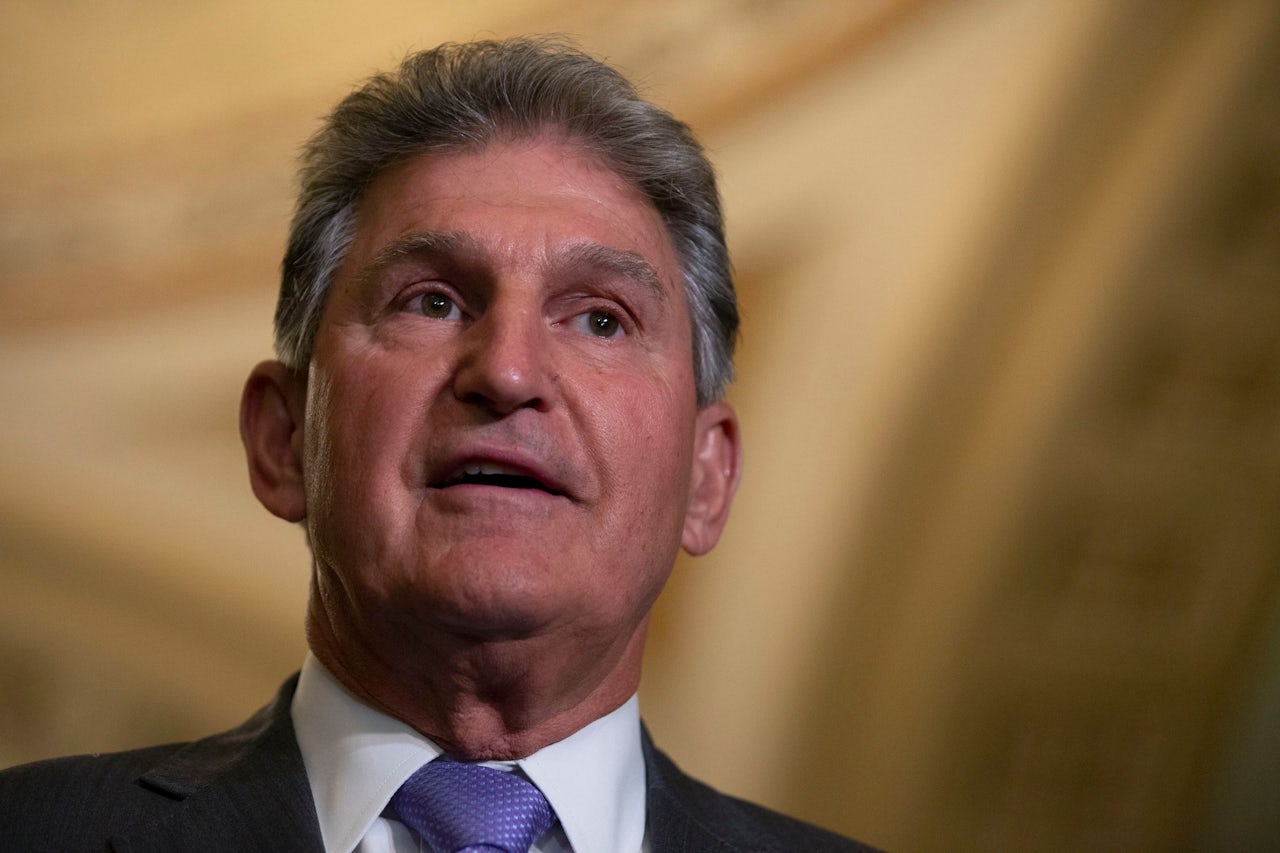If President Donald Trump has been successful at anything over the past few years, aside from wrecking the federal judiciary, it’s been bullying congressional Republicans into voting for his agenda with the threat of mean tweets, ads, and primary challenges. Democratic presidential candidates could stand to learn something from this.
This week, Democratic presidential candidate and Sen. Bernie Sanders was asked by John Harwood of CNBC if he thinks he’d have the votes to pass his agenda, including Medicare for All, through the famously conservative Senate. Even with a Democratic majority, this is a tall order. “Is Joe Manchin going to vote for your program? Is Jon Tester going to vote for your program?” Harwood asked, referring to two of the more conservative Democrats in the Senate.
Bernie Sanders on whether conservative Democrats like WVA’s Manchin will back his Green New Deal agenda: “damn right they will. you know why? they’re going to think, ‘if i don’t support working people’s agenda, President Sanders is coming to my state’ “https://t.co/a67heTp7Xx
— John Harwood (@JohnJHarwood) October 29, 2019
“Damn right they will. You know why? We’re going to go to West Virginia,” Sanders responded, specifically singling out Manchin, who has been far chummier with Trump than he ever was with Barack Obama. “Your average politician sits around and he or she thinks, ‘Let’s see. If I do this, I’m going to have the big money interests putting 30-second ads against me. So I’d better not do it.’ But now they’re going to have to think, ‘If I don’t support an agenda that works for working people, I’m going to have President Sanders coming to my state and rallying working-class people.’”
Manchin has since gone on Fox News to say he wouldn’t vote for Sanders in a general election, which is rich coming from someone who voted for Brett Kavanaugh to be on the Supreme Court. That’s an easy thing to say when Sanders is by no way guaranteed to be the nominee, but so it goes with Joe Manchin, one of the most godawful people in the Senate with a D next to his name.
Even as he’s been allowed to essentially do whatever the hell he wants for the past ten years, however, Manchin has repeatedly spit in the face of the people who’ve coddled him, including Sen. Chuck Schumer and Obama. No national Democrat has ever been able to wrangle Manchin into being a consistent vote for their agenda. No one’s ever really even tried; conventional wisdom in D.C. seems to hold that Manchin’s ideology or temperament is what’s keeping him in office, rather than the strength of his political machine, which helped elect billionaire coal boss Jim Justice as a Democratic governor the same year that the state went for Trump by 42 points. (Justice has since switched back to the GOP.)
The Obama administration, for example, tried the nice way, even after Obama was given a broad mandate by voters in the 2008 election. The nice way spectacularly failed.
Will Sanders’s strategy work on Manchin? I would bet against it. But Sanders’s embrace of the bully pulpit to browbeat bad Democrats into voting for his agenda would be right on target. Considering the makeup of Congress, and as it promises to remain that way if the people running Democrats’ campaign infrastructure get their way, a healthy dose of the proverbial big stick is the only way a Sanders agenda has even an iota of a chance of passing.
One needs to look no further than Trump for a good example of how effective this strategy can be. Trump went from having nearly no congressional endorsements during the Republican primary three years ago to whipping congressional Republicans so thoroughly into shape that most have refused to speak out on his blatant corruption, and those who’ve dared to criticize him have either been bullied into retirement or lost Trump-backed primary challenges.
The reason for this is obvious: Trump is the president now, and being the president comes with an enormous amount of political power. Unlike Trump, however, no postwar liberal president has ever really attempted to wield the power of its base against more skeptical intra-party opponents of their agenda.
The Obama administration tried the nice way, even after Obama was given a broad mandate by voters in the 2008 election. The nice way spectacularly failed. The conservative wing of the Democratic Party killed some of Obama’s most ambitious plans on labor and the climate — Manchin infamously ran an ad in 2010 where he literally shot the cap and trade bill with a gun — and helped the GOP water down the things that actually passed, such as taking the public option out of Obamacare.
Sanders’s fellow Democrats in the race, however, still appear to believe it’s possible to succeed where Obama failed. Joe Biden thinks his relationships with dead senators prove his ability to make consensus, in spite of all evidence to the contrary. Others, like Sen. Amy Klobuchar and presidential candidate Pete Buttigieg, seem to think that by virtue of being from the Midwest and starting from a place of compromise, they can make the country’s politics less polarized.
But the biggest problems facing this country right now are not polarization, or incivility in Congress, or Democratic disunity. We have much bigger problems than that, such as that diabetics are dying from rationing insulin, that people are drowning in student debt, that the elimination of reproductive rights throughout the states continues to get worse, that California now appears to be perpetually both on fire and without electricity. And if the path to solving these many crises means ending the careers of some of the most craven people in Congress, then so be it.
